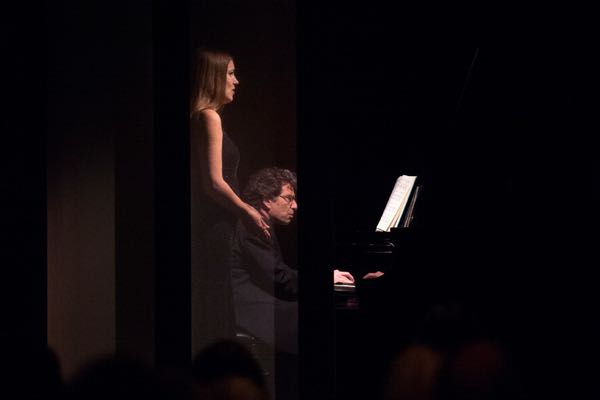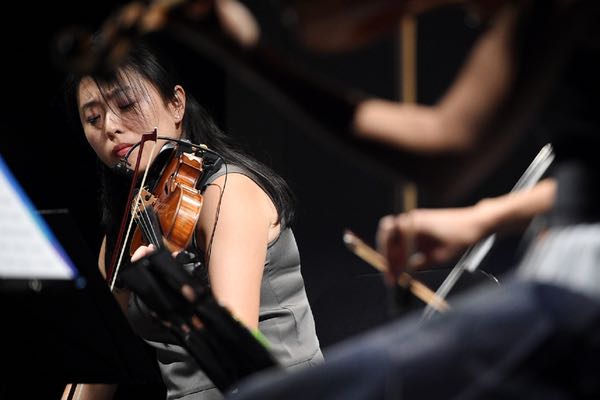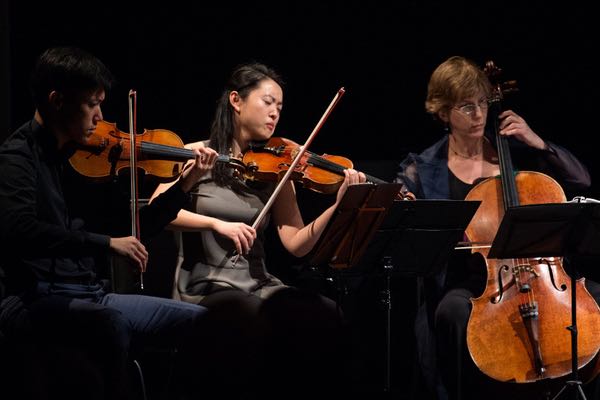Concert of the Year
Scott Cantrell, special contributor and former classical music critic for the Dallas Morning News, reviews "Schulhoff, Reich and Wagner: Music from Yellow Barn" at the Nasher Sculpture Center's Soundings series:
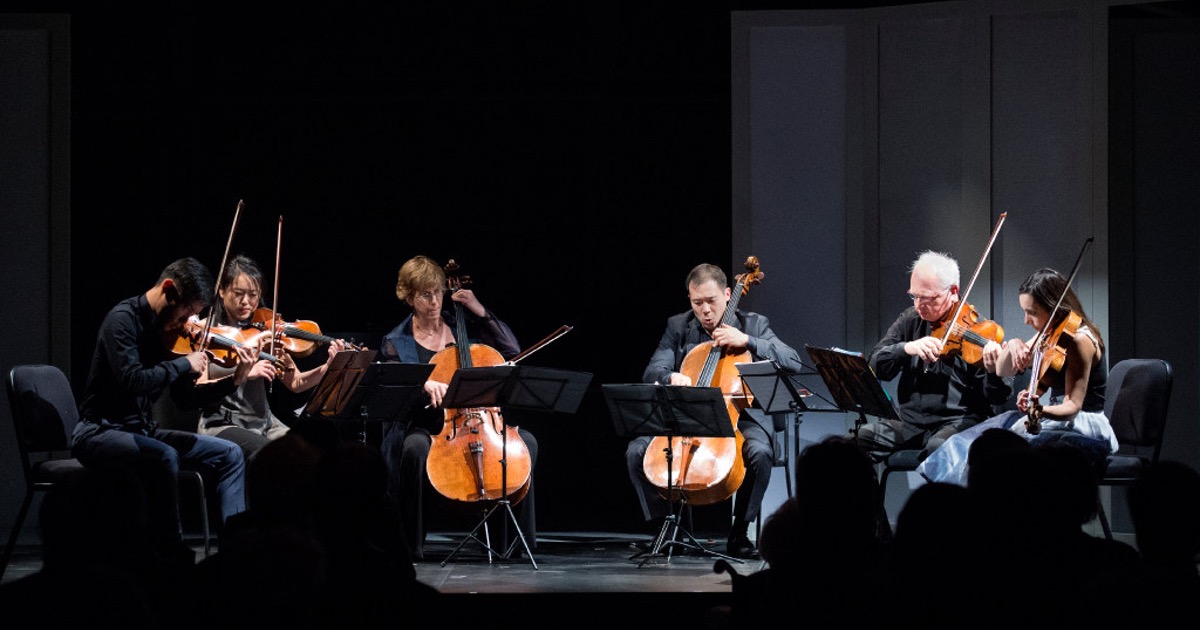
The prize for the year's most inventive--indeed, provocative--classical concert goes to the one presented Thursday night in the Nasher Sculpture Center's Soundings series.
The first sounds we heard, from behind a scrim, were the yearning suspensions opening the third act of Wagner's Tristan und Isolde, played by pianist (and Soundings artistic director) Seth Knopp. In fact, this was the introduction to the third of Wagner's love-smitten Wesendonck Songs, an introduction Wagner subsequently expanded into the orchestral prelude. Together with two other songs from the cycle at the end of the concert, it was elegantly sung, with incandescent tone, by soprano Melanie Henley Heyn.
(Jeffrey McWhorter/Special Contributor)Next came a lighthearted evocation of love, Erich Wolfgang Korngold's violin-and-piano arrangement of a waltzlike movement from his incidental music for Shakespeare's Much Ado About Nothing. With silken tone, violinist Daniel Chong joined Knopp in a warmly expressive performance.
A wholly different aspect of love was portrayed in the Sonata erotica [sic] by Erwin Schulhoff (1894-1942), a brilliant Czech composer whose Jewish heritage and later Soviet sympathies doomed him to death (of tuberculosis) in a Nazi concentration camp. For solo female voice, this "sonata" actually notates a crescendo and decrescendo of gasps, moans, screams and murmurs of a woman in, shall we say, physical ecstasy. It was quite convincingly realized by Liza Sadovy.
After these permutations of love, Steve Reich's 1988 Different Trains and Schulhoff's 1920-1924 String Sextet took us to very different places, although one could imagine connections. In the former, train trips before, during and after World War II are evoked in recordings of chugging, whistling trains and snippets of speaking voices; a string quartet supplies its own chuggings, but also anticipates, doubles and echoes the pitches and rhythms of the speaking voices. The Parker Quartet--violinists Chong and Ying Xue, violist Jessica Bodner and cellist Kee-Hyun Kim--collaborated in a gripping account.
(Jeffrey McWhorten/Special Contributor)Right-wing governments are invariably hostile to artistic innovation, and Schulhoff's embrace of influences from the Dada movement as well as both musical and visual expressionism further doomed him during the Nazi occupation.
(Jeffrey McWhorter/Special Contributor)After a roughhewn, atonal Allegro risoluto, the Sextet's following three movements are less confrontational, though hardly soothing. Free-range lines--not really melodies--are woven through various accompanimental textures. The third movement is an earthy quasi-folkdance à la Bartók. Adding violist Roger Tapping and cellist Natasha Brofsky, the Parker Quartet too readily sacrificed tuning to fury in the first movement, but thereafter the playing was impressively focused and compelling.
Yellow Barn’s 2017 Summer Artwork
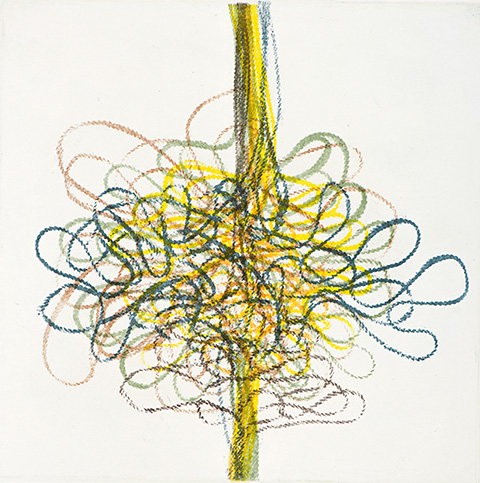
Alisa Dworsky, Fine Cord 60, 2010, 9" x 9" image on 19" x 15" paper, multiple registration intaglio print using softground technique; Courtesy the artist
My drawings and prints are constructed of lines that follow from movement but they also define points in space, hesitation, and mass. The prints in the Fine Cord Series are made from multiple registrations of various zinc plates which I prepared using a soft ground technique. A fine nylon cord was used to make marks in the soft ground prior to exposing the plate to acid. Many of the prints use ghost and offset impressions.
—Alisa Dworsky
Alisa Dworsky creates sculpture, installations, buildings, drawings and prints; her work in one discipline influences her work in another. She is interested in how structure and force give shape to form and in the way human beings use geometric systems to order their environments. Her work is inspired by textiles, agricultural patterns, computer drawings, topographical maps, architecture and the principle of quantum physics that in all matter there is movement.
Dworsky has created installations for contemporary arts spaces around the country: the LAL in Lexington Kentucky, 516 Arts in Albuquerque New Mexico, Artspace in New Haven Connecticut, and in Vermont for the Bennington Museum, Burlington City Arts, the Burlington waterfront, the Fleming Museum at the University of Vermont, the Brattleboro Museum, The Vermont College of Fine Arts, and the Vermont Agency of Transportation. Awards include a Yaddo residency fellowship, six grants from the Vermont Arts Council, four grants from the Vermont Community Foundation, and grants from the Berkshire Taconic Foundation and the Sustainable Arts Foundation. She has a master's degree in Architecture from Yale and a BA from Stanford in both Studio Art and International Relations. She is cofounder of the architectural design firm DS Architects (formerly Terra Firma inc). Dworsky has taught architecture and art at Norwich University, Stanford University, the Yale Graduate School of Architecture, Ball State University, and the Yestermorrow Design-Build School. She lives in Montpelier, Vermont with her husband and two daughters.
You can see more of her work at www.alisadworsky.com.
Introducing Enrique Granados (1867-1916)
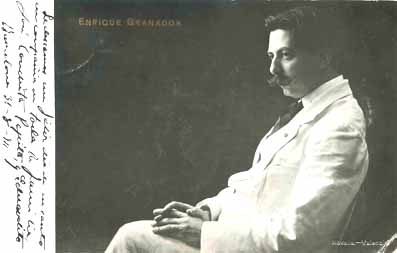
Yellow Barn welcomes soprano Laura Strickling, pianist Liza Stepanova, and Venezuelan-American composer Reinaldo Moya for a residency of love songs honoring turn-of-the-century Spanish composer Enrique Granados (1867-1916). The residency explores two major works: Canciones amatorias, a collection of songs by Granados set to Renaissance Spanish love poems, and Ciudades del Porvenir (Cities from a Future to Come), a newly commissioned Spanish-language song cycle by Moya. On Sunday, December 18, Strickling and Stepanova will culminate their residency with a performance of Granados’ Canciones amatorias and the world premiere of Moya’s Ciudades del Porvenir at Next Stage.
Stepanova met Moya while they were both attending graduate school at Juilliard, and she has performed several of Moya’s works over the past few years.
When Laura and I were considering a commission in connection with the Granados project, his name immediately came to mind. His music is always beautiful and speaks directly to the audience. I recall hearing excerpts from his powerful opera "Generalissimo" at Symphony Space in New York and knew that he could write very effectively for voice. Additionally, I hardly know a more avid book reader than Reinaldo. He has wide-ranging literary tastes, and it was not surprising that he immediately got to work selecting love poetry to match the impact of the Granados verse. I am very much looking forward to working on the result: the songs are gorgeous and I am excited to discuss poetry with Reinaldo that was written in his native language.
—Liza Stepanova
Moya writes of his new work:
The song cycle Ciudades del Porvenir (Cities from a Future to Come) consists of a pair of settings of the poetry by the young Mexian poet Yaxkin Melchy. I was attracted to his whimsical, almost surrealistic writings. I could sense that underneath the often sharp contrasts on the surface, there was a real human and moving quality to his poetry. The two songs work as kinds of foils to one another with El Corazón Humano (The Human Heart) being the louder, darker sibling ot the more quietly expansive Ciudades del Porvenir (Cities from a Future to Come).
—Reinaldo Moya
An offering in solidarity
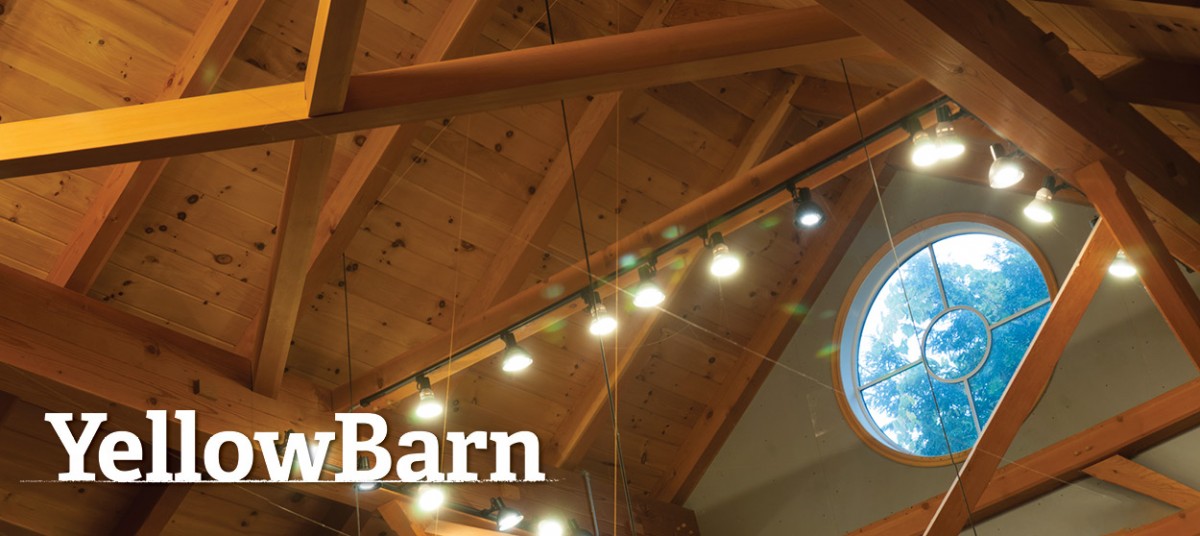
Last summer we welcomed audiences to the Big Barn with the following message in our season program book. We offer it today in solidarity and as an invitation to listen, thankful that music can speak effortlessly to unassailable truths, both personal and collective.
These are good walls. They are walls that embrace our humanity and resonate with devotion. Within them, worlds of sound are expressed, each one unique as a snowflake, and universal as snowfall. Each of these worlds will be more or less understood, or perhaps not at all, but listening, and wanting to understand, is what we will find here always.
This is the essence of the musician’s relationship with those who purposefully walk into a room for music and have the doors close behind them. With that act, a commitment to listen is made, to voices of unknown origin, religion, political leaning, gender, or sexual orientation. It is understating the case to say that this act is one of acceptance. After all, it is not who the voice belongs to that brings us together; it is what it might express, and what might be deepened in each of us by listening.
In welcoming you to Yellow Barn this season, it does not seem appropriate to comment here on the current wave of political sentiment that aspires to separation and nationalistic power, but that movement has made me acutely aware of how differently we live the evenings we share in this room. I am grateful that Yellow Barn is one of a constellation of places where another ideal is lived; where walls are not an escape or separation, but an invitation to listen far beneath the surface.
—Seth Knopp, Artistic Director
Music No Boundaries: Boston
Boston Haul, September 2016
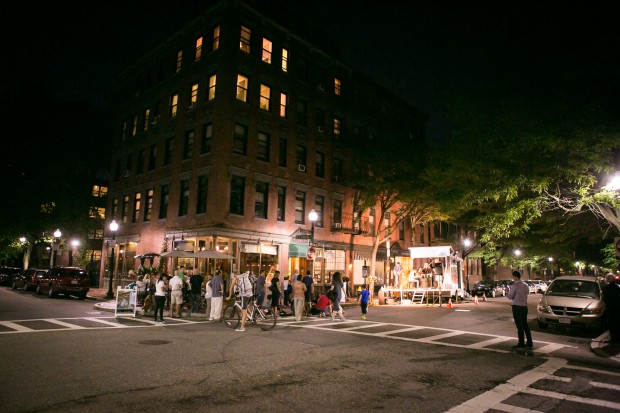
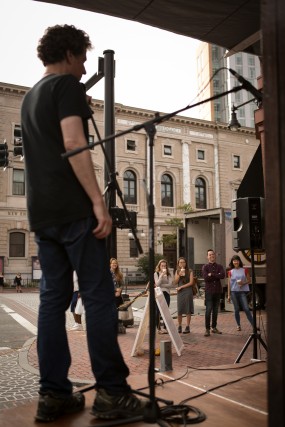
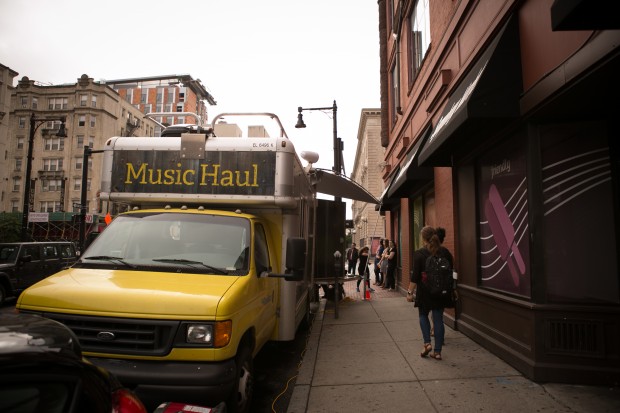
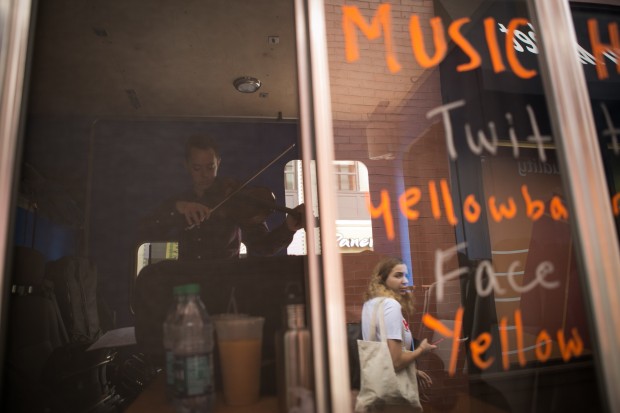
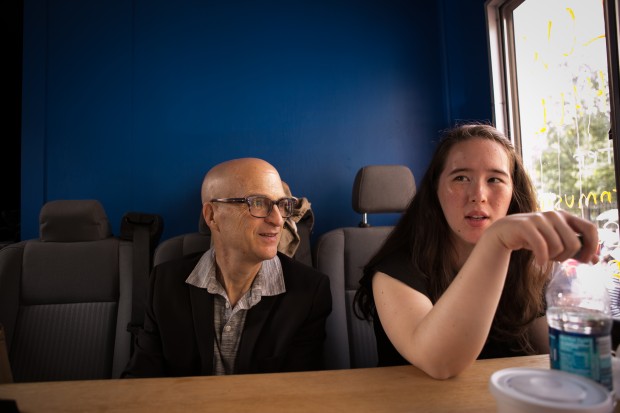
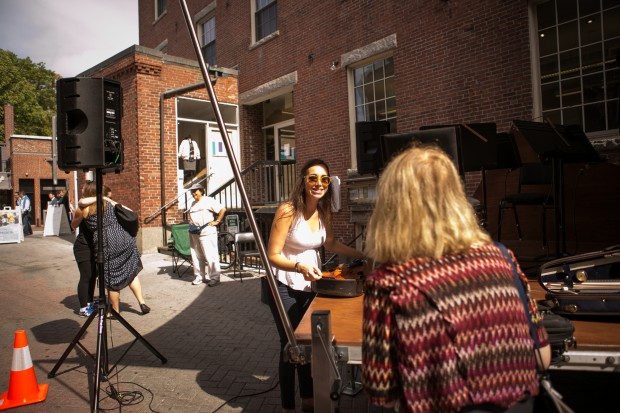
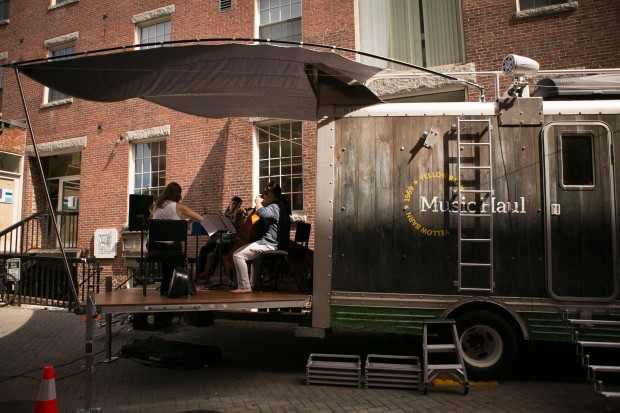
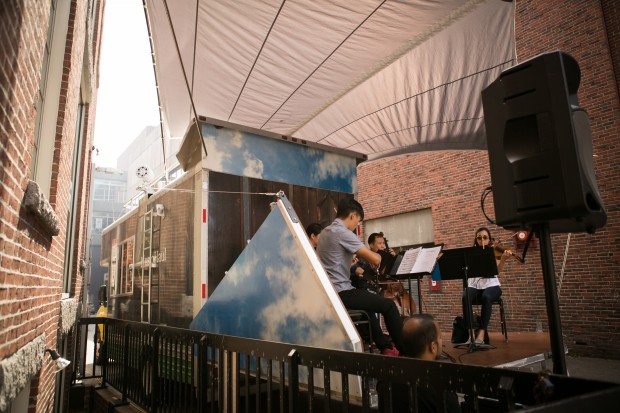
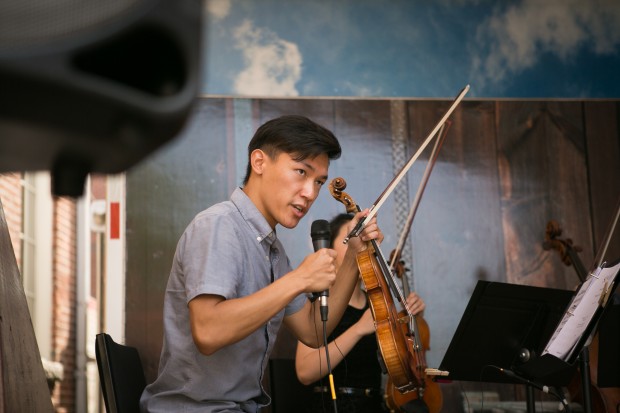
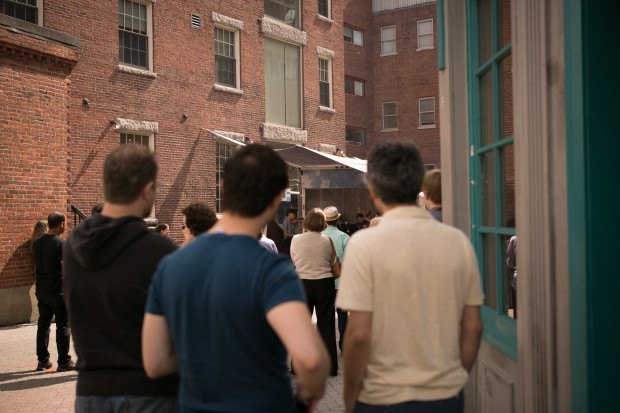
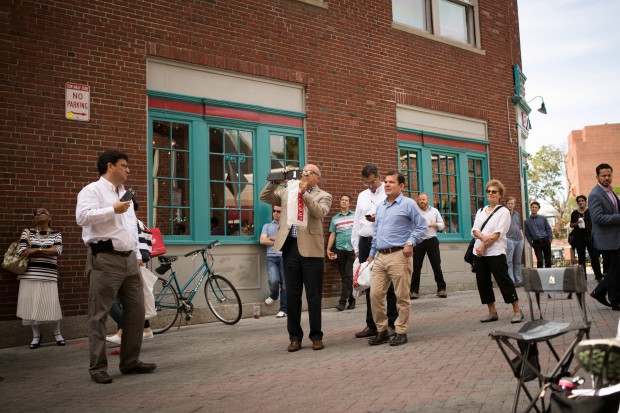
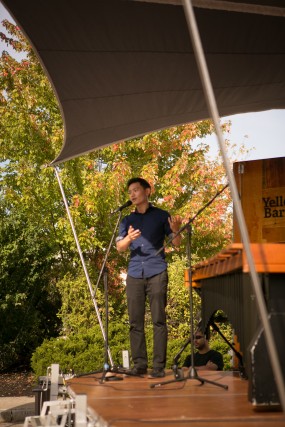
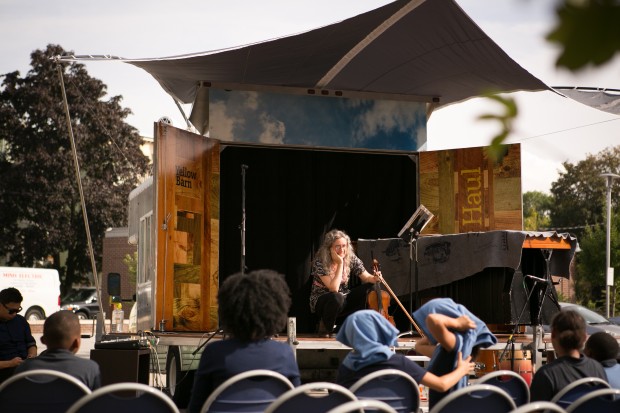
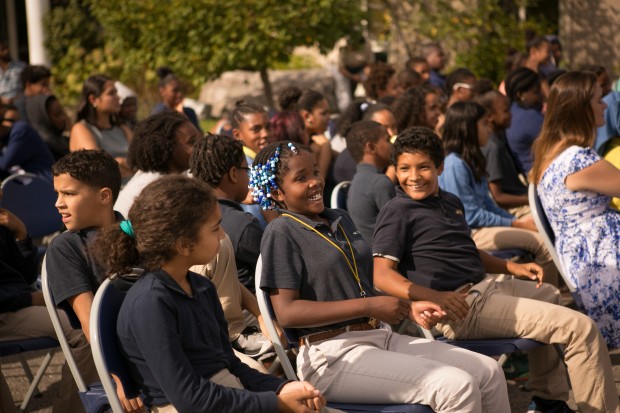


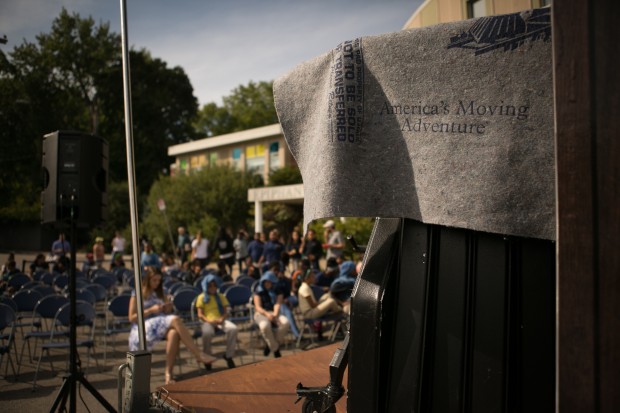
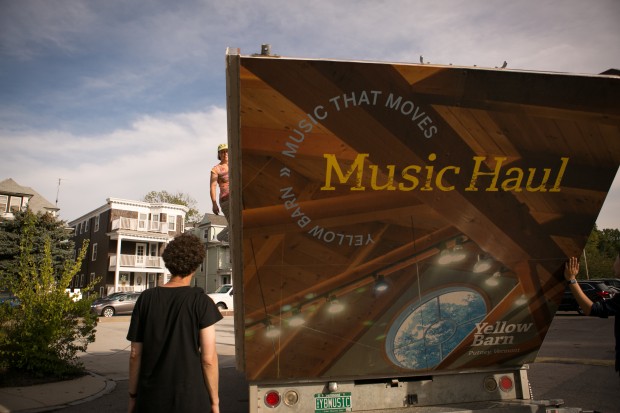
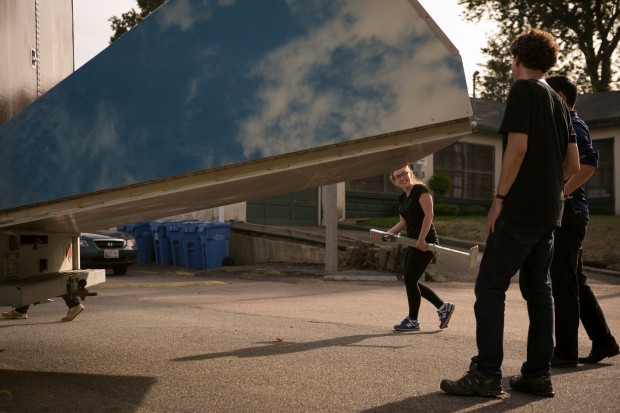
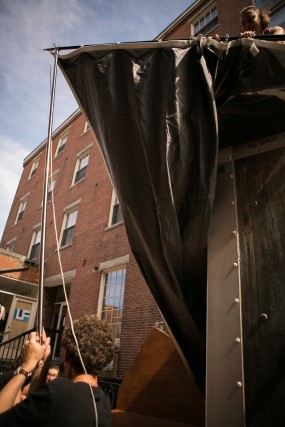
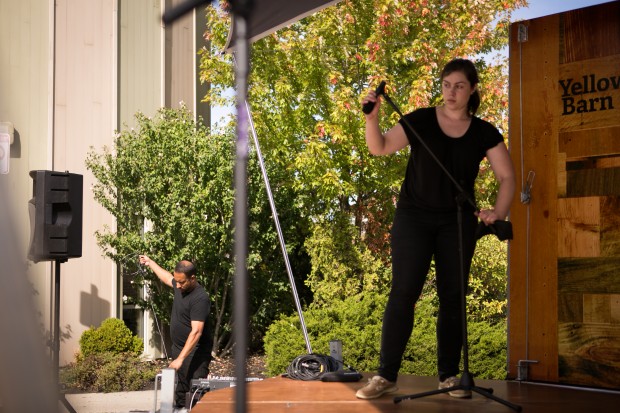
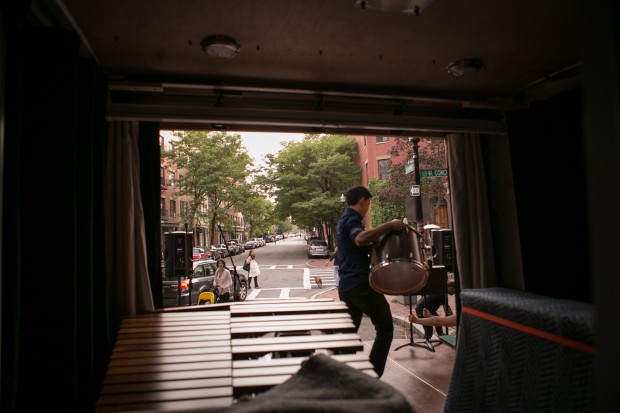









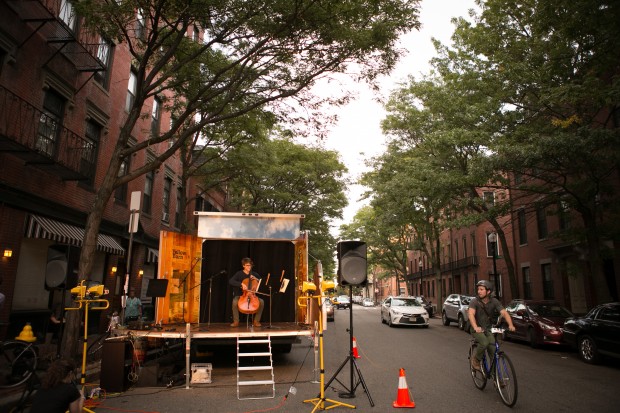
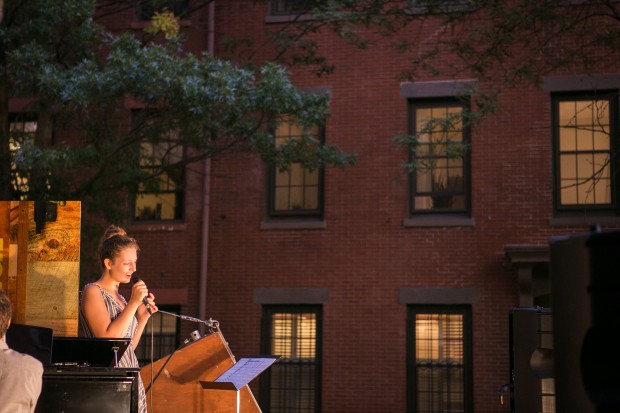
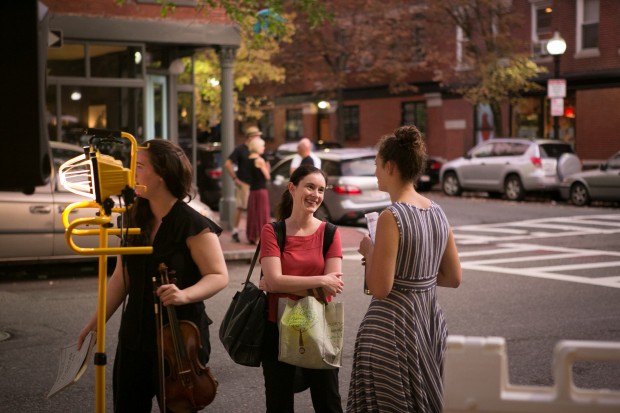
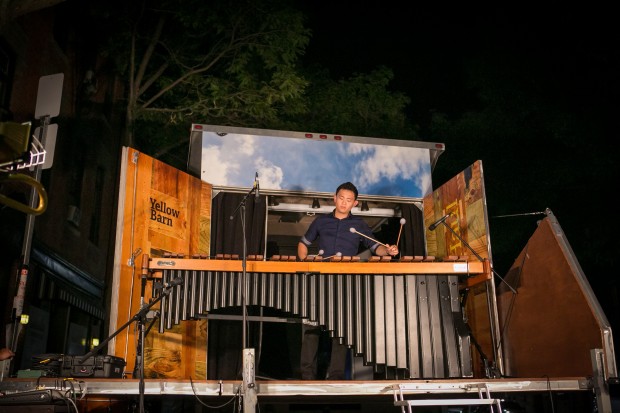
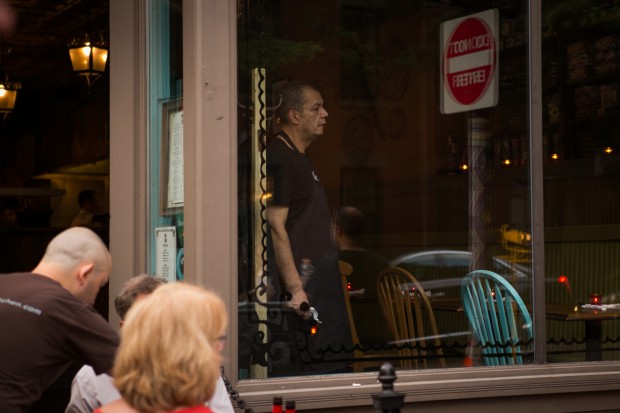
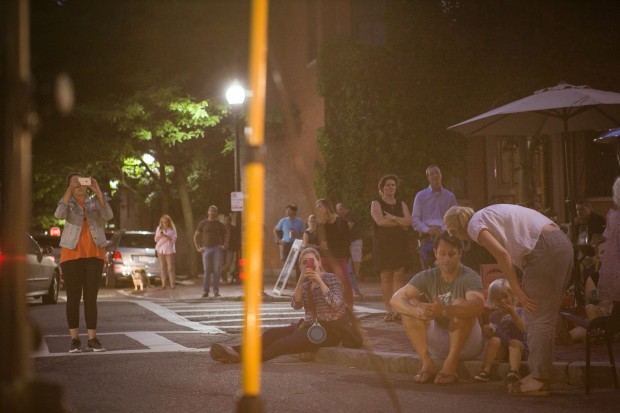
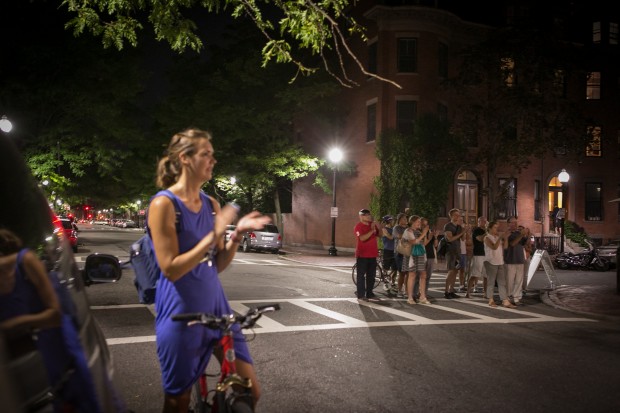
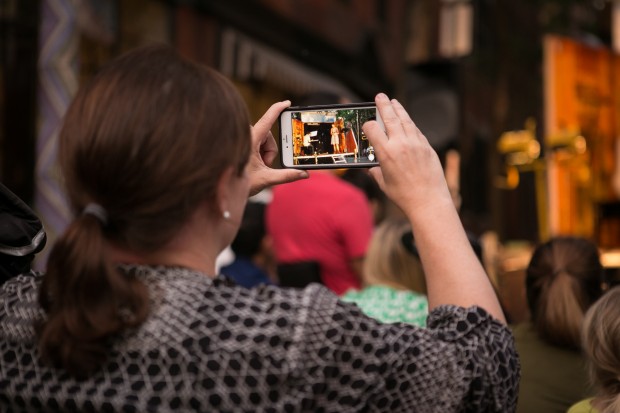
Photo by Iaritza Menjivar
Read the Boston Globe's profile on Yellow Barn Music Haul: Music on Wheels Rolls into Boston
From September 18th to September 20th Music Haul toured Boston, Dorchester, and Arlington. Our trip began with a grant to visit three schools: Lesley-Ellis School in Arlington and its nearby sibling school, the disadvantaged Dearborn Academy, as well as the Epiphany School in Dorchester. Other stops included Christopher Columbus Park, and spontaneous street performances throughout the city.
Sunday, September 18
Public Performance
9:00-10:00am | Corner of Rutland St. and Washington St. (near Flour Bakery in the South End)
Neighborhood Performance
12:00-1:00pm | St. Mary's Episcopal Church in Dorchester
Public Performance
3:30-5:00pm | Christopher Columbus Waterfront Park
Monday, September 19
School Performance
8:00-11:20am | Lesley Ellis School in Arlington
School Performance
1:00-2:25pm | Dearborn Academy in Arlington
Public Performance
5:00-6:30pm | Club Passim (47 Palmer St, Cambridge)
Tuesday, September 20
Public Performance
9:00-10:00am | Corner of Gainsborough St and Huntington Ave (near Pavement Coffeehouse)
Public Performance
12:30-1:30pm | Club Passim
School Performance
3:00-3:40pm | Epiphany School in Dorchester
Public Performance
5:30-7:30pm | Corner of Shawmut Ave. and W. Concord St. (near El Centro and Orinoco restaurants)
Musicians
Sarah Brady, flute
Ari Isaacman-Beck, violin
Michael Bukhman, piano
Sarah Darling, viola
Caroline Goulding, violin
Jinsun Hong, viola
Zenas Hsu, violin
Harriet Langley, violin
The Parker Quartet
Chase Morrin, piano
Jesse Morrison, viola
Sasha Scolnik-Brower, cello
Cordelia Tapping, voice
Sam Um, percussion
Sound engineer: Dev Ray
Music on wheels rolls into Boston
Malcolm Gay, staff writer for The Boston Globe, introduces Yellow Barn Music Haul in advance of the 2016 Boston tour:
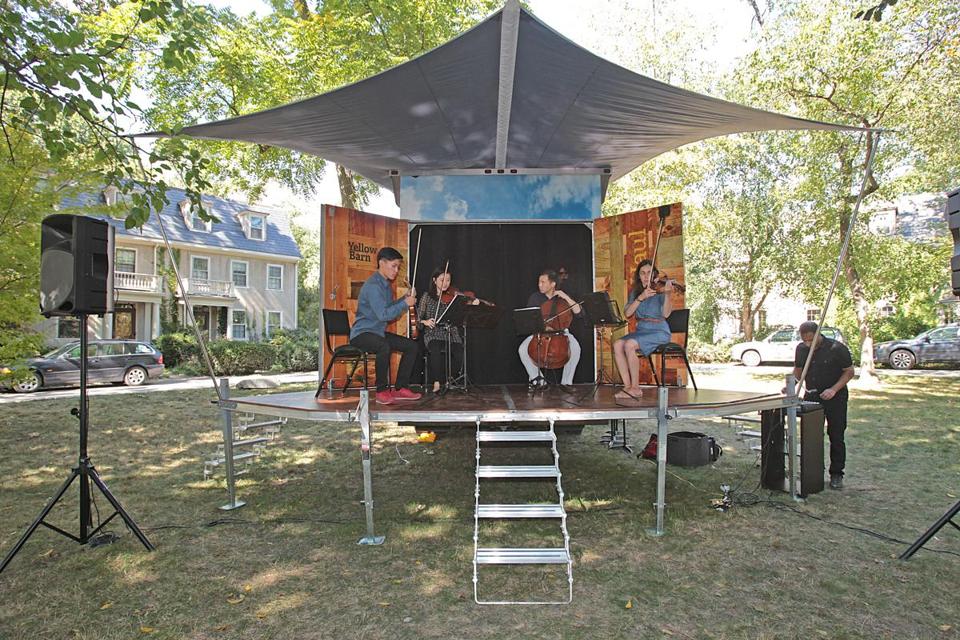
On a stage that unspooled from a converted U-Haul, the Grammy Award-winning Parker Quartet rehearsed in Cambridge Friday.
The 17-foot U-Haul truck sat parked in an empty field, ringed by trees. With the touch of a button, a roof-mounted winch whirred into action, unspooling cable as a fan-shaped stage lowered like a drawbridge from the rear. The U-Haul’s modified rear doors acted as a band shell, flanking the stage to project sound, and a custom-made sail, supported by deep-sea fishing rods, projected as a visor from above.
Fifteen minutes later and the vehicle, dubbed the Music Haul, was a fully functioning stage — a 21st-century gypsy caravan that will bring live performances to the streets and schools of Greater Boston, Sunday through Tuesday.
“It really is more boat than truck,” said Catherine Stephan, executive director of the Yellow Barn music center. “We got to know RV dealerships really well.”
The musical equivalent of a food truck, Music Haul is the brainchild of Yellow Barn, an acclaimed center for chamber music tucked away in the hills of southeastern Vermont.
“It’s supposed to be as close to magic as possible,” said architect John Rossi, one of the traveling venue’s principal designers. “As much as we could take a U-Haul truck and make its transformation seem effortless and smooth, and actually even beautiful, that’s what we wanted to do.”
“We exist in the world as musicians that is in a way so finely controlled and tuned,” said Yellow Barn’s artistic director, Seth Knopp. “Music Haul removes some of the ceremony, which can be a barrier for people who are not often exposed to that world. There’s an element of taking something out of its accustomed place and allowing it to take people by surprise.”
After a pit stop in New Hampshire, the Music Haul spent Friday in Cambridge, where the Grammy Award-winning Parker Quartet used its stage to rehearse Schubert’s devilish Quartet in G Major before the Boston tour kicks off Sunday with concerts scheduled in the South End, Dorchester, and Christopher Columbus Waterfront Park. Later stops include performances at Harvard Square and the State House.
The tour is built around performances at three area schools, where Yellow Barn alumni musicians will perform from the six-person stage as students arrive in the morning, and they will give presentations during recess.
“They’re on their playground,” said Stephan, who added that the kids can decide whether they participate. “They can go play if they want to...and because they all choose to be there you’ve got their attention.”
Yellow Barn alumni will also take the stage at other venues around town, providing open-mic-style performances that include a range of classical music and jazz, with pieces by Claude Debussy, Felix Mendelssohn, György Ligeti, and Iannis Xenakis.
“It’s almost like a microcosm of Yellow Barn,” said Daniel Chong, first violinist in the Parker Quartet. “It’s the care and love for great music and performers, and delivering them to people in a way that’s both surprising and engaging.”
Founded in 1969 by cellist David Wells and his wife, pianist Janet Wells, Yellow Barn hosts scores of musicians each summer at its Vermont campus, where they practice, share ideas, and perform about 20 concerts over a five-week season at their primary music hall, Big Barn, in Putney. The music center, which shares a campus with the Greenwood School, also offers artist residencies and a young artists program.
Stephan said the Music Haul was an extension of Yellow Barn’s founding ethos.
“The mission is the same,” she said, adding that the $90,000 project was paid for in part by a Fresh Sound Foundation grant. “Either you know something about the music walking in, or you don’t. Either way, we want to give people a different type of experience.”
In designing the Music Haul, Rossi and his team divided the truck’s storage area into two parts, transforming the fore section into a greenroom with windows, seating for six, and a table, while the aft portion stores instruments and lighting, converting to a curtained area during performances.
“The truck becomes the backstage,” said Rossi, who worked on the project with boat designer Bill Lincoln. “The drive has always been to simplify, simplify, simplify.”
Rossi, whose business, Visible Good, designs crates that unfold to become emergency relief structures for disaster areas, said Music Haul shares certain design elements with his boxed buildings, which are known as Rapid Deployment Modules.
“The crazy little disaster-relief military medical shelter is the thing that probably had the most influence on this, versus any architecture with a capital ‘A,’ ” Rossi said.
Knopp said when it comes to Music Haul, which is also equipped with marine speakers to blast Yellow Barn recordings en route, a key element is in the wonderment afforded by surprise.
“Because it’s unexpected, people will not have preconceptions, and they won’t feel the fear of ignorance in the face of an experience they’ve never had before,” he said. “Without that expectation, you have a kind of vulnerability, an openness, that one needs to listen in the best possible way.”

